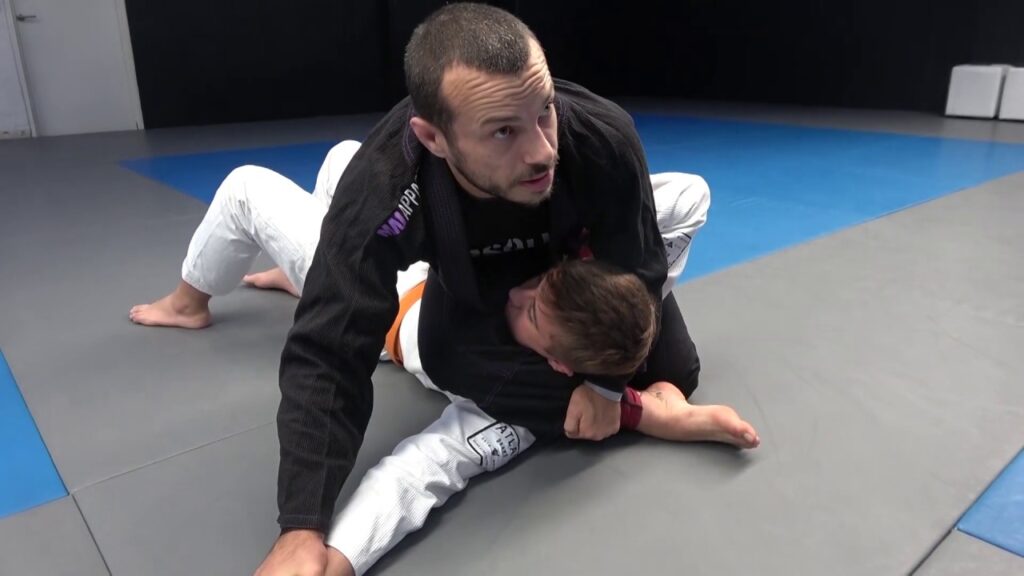The triangle choke is one of the most effective submissions in Brazilian Jiu-Jitsu, and it can be executed from a variety of positions. While it’s most commonly associated with the guard position, the triangle can also be executed from the mount position. In this article, we’ll take a closer look at the triangle choke from full mount and break down the technique step-by-step.
Set up the Triangle:
To execute the triangle from full mount, you need to first create some space between yourself and your opponent. One way to do this is to sit up slightly and place your hand on their chest, using it as a frame to push them away. Next, slide your knee up to their shoulder, trapping their arm in the process. As you do this, use your other hand to reach across their neck and grab onto their opposite triceps.
Create the Angle:
Once you have your opponent’s arm trapped and your hand on their triceps, it’s time to create the angle for the triangle. To do this, swing your leg over their head and place your foot on their hip. This will allow you to turn your body and face towards their legs, while still maintaining control over their arm.
Lock in the Triangle:
With the angle created, it’s time to lock in the triangle choke. To do this, bring your leg that’s over your opponent’s head down and wrap it around their neck, locking your foot in behind your opposite knee. At the same time, use your other leg to squeeze their trapped arm towards their neck, creating the necessary pressure to finish the submission.
Adjust and Finish:
Once you have the triangle locked in, you may need to make some adjustments to finish the submission. One common adjustment is to use your free hand to pull down on your opponent’s head, creating additional pressure on their neck. You can also adjust your legs and hips to further tighten the triangle and make it harder for your opponent to escape.
Defending the Defense:
As with any submission, your opponent will be looking for ways to escape the triangle. One common defense is for your opponent to posture up and try to stack you, putting pressure on your neck and attempting to free their trapped arm. To defend against this, you can use your free hand to push on their head, keeping them from posturing up and maintaining control of the submission.
Alternative Setups:
While the setup we’ve described involves trapping your opponent’s arm, it’s not always necessary to execute the triangle from full mount. You can also set up the triangle by trapping your opponent’s arm from other positions, such as side control or the mount. By being comfortable with a variety of setups, you can increase your chances of successfully executing the submission.
The triangle choke from full mount is a highly effective submission that can catch your opponent off guard. By following the steps outlined in this article and practicing the technique, you can add another powerful weapon to your arsenal of submissions. Remember to always be aware of your opponent’s defense and be ready to make adjustments as necessary to finish the submission.
Hey there! Just a heads up that some of the links in this post are affiliate links, which means that if you click on them and make a purchase, I may earn a commission. But don’t worry, it won’t cost you anything extra – in fact, you might even get a sweet deal! Plus, every purchase made through one of these links helps support my blog and keep the content coming. So, if you do decide to make a purchase, thank you so much for your support – it means the world to me!
All the best,
Will












